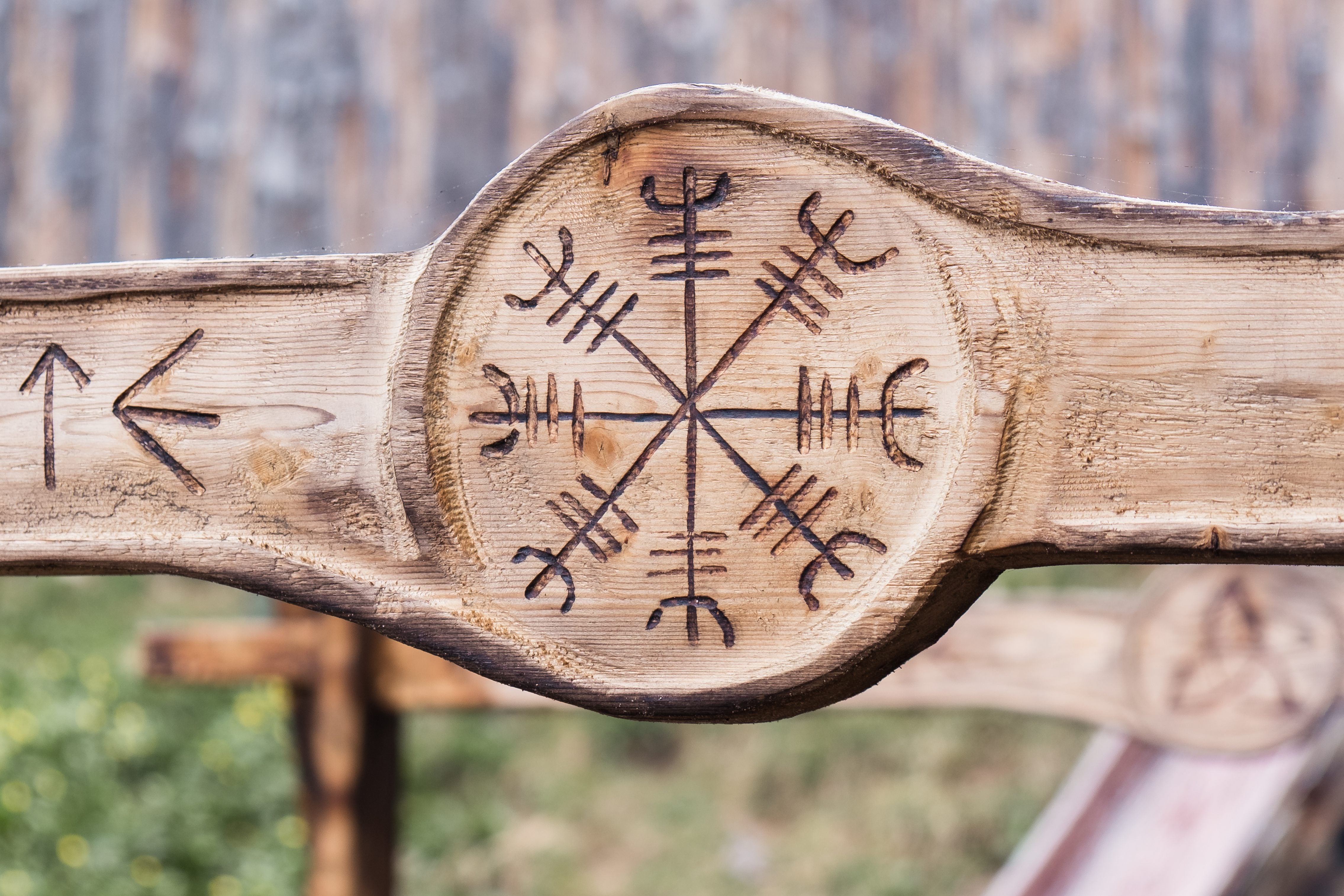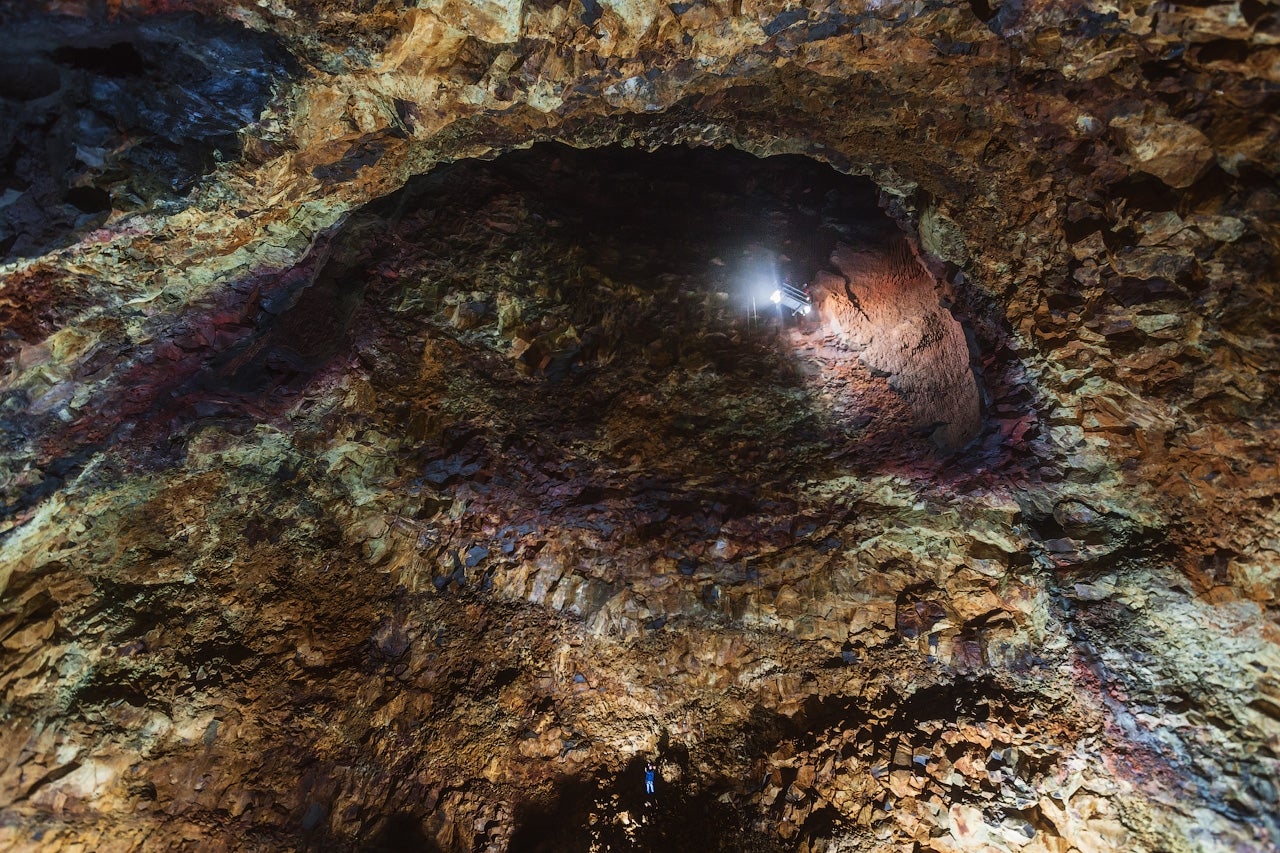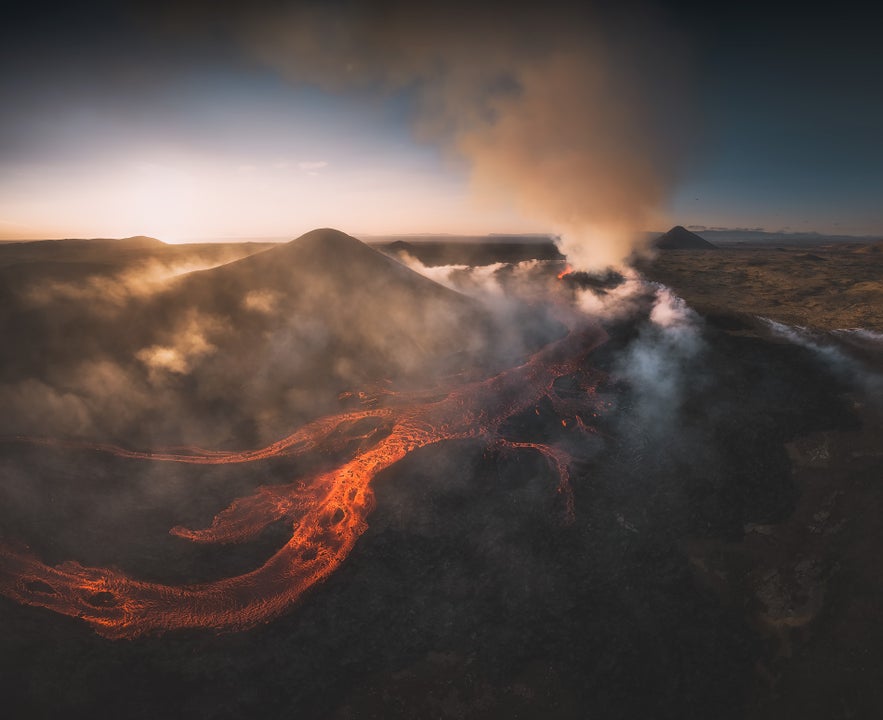
On July 10th, a volcanic eruption began by the mountain Litli-Hrutur on the Reykjanes Peninsula just before 5 PM. The people of Iceland had been expecting this, as they had experienced many earthquakes in the days leading up to the eruption.
With a fissure reaching half a mile (900 meters) long, the new eruption was more powerful than the eruption in Fagradalsfjall Volcano in 2021 as well as the second eruption in 2022. Fortunately, residents and infrastructure in the area were not in any danger.
Why You Can Trust Our Content
Guide to Iceland is the most trusted travel platform in Iceland, helping millions of visitors each year. All our content is written and reviewed by local experts who are deeply familiar with Iceland. You can count on us for accurate, up-to-date, and trustworthy travel advice.
The eruption in Litli-Hrutur was not the end of the volcanic activity in the area, as more eruptions took place by the Sundhnukagigar crater row and the mountain Hagafell in the following months. Unfortunately, these eruptions proved damaging to the livelihoods of people in Grindavik, who were forced to evacuate their homes.
The Litli-Hrutur eruption is over. It lasted for just under a month before being declared finished by authorities on August 5th. According to experts, there is a chance that the volcano might erupt again. If and when that happens, make sure to take a look at some of the fantastic volcano tours available to find what suits you best.
The recent eruptions in the area garnered Iceland international attention as people flocked to the country to see them. The location and scope of the eruptions were very tourist friendly, as they were close to Keflavik International Airport and the capital of Reykjavik, and were made widely accessible thanks to new hiking trails.
But how did the eruption at Litli-Hrutur compare to the previous two? Let's find out!
- Learn more about volcanoes with the Ultimate Guide to Volcanoes in Iceland
Where Was the Litli-Hrutur Volcanic Eruption?
 The eruption in Litli-Hrutur was up to ten times bigger than the eruption of Fagradalsfjall Volcano in 2021 and three times bigger than the eruption in 2022. Thousands of people made their way to the eruption site to see the natural powers up close.
The eruption in Litli-Hrutur was up to ten times bigger than the eruption of Fagradalsfjall Volcano in 2021 and three times bigger than the eruption in 2022. Thousands of people made their way to the eruption site to see the natural powers up close.
Although the eruption by Litli-Hrutur is over, the eruption site is still an interesting place to visit. Litli-Hrutur is located roughly two and a half miles (4 kilometers) northeast of Fagradalsfjall Volcano. The round-trip trek to Litli-Hrutur is a bit longer than to Fagradalsfjall Volcano, or around 12 miles in total (20 kilometers), following what is now marked as Path E. Visiting the site with a local expert is recommended, such as on an afternoon or evening hike of the Litli-Hrutur Eruption Site.
Since no roads lead directly to the eruption site by Litli-Hrutur, the first step is to get to one of the parking lots where a hiking route to the volcano begins. If you decide to rent a car and go by yourself, the parking areas are marked "P1" or "P2" by nearby road signs and are accessible from Route 427. The parking areas are about a 1-hour drive from Reykjavik. Keep in mind that parking by the roadside is not permitted and that off-road driving in Iceland is illegal.
See the following map for more details.
The trek to Litli-Hrutur is long, so make sure you have sturdy hiking boots with ankle support when you start the hike. The trail is rocky and slippery, with a decent incline. It's important to bring warm layers and a waterproof jacket so you're prepared for anything.
Most of the route will be on a gravelly road with a slight incline. When you are roughly three-fourths of the way there, the gravel road ends, and you will have to walk over mossy rocks.
Path C, which starts from Mt. Langihryggur, offers a shorter alternative. It's around 2.5 miles (4 kilometers) one way and leads to a viewpoint overlooking several lava fields, including the one from the 2023 Litli-Hrutur eruption. This trail does not reach the crater but provides scenic views of multiple eruption sites. Walking on the lava is dangerous and not allowed.
Before setting out, check trail conditions and eruption updates at safetravel.is. Gas emissions may affect air quality, so always check real-time conditions at loftgaedi.is, and consider bringing a gas mask or filter mask if you plan to hike close to the eruption.
It is also important to bring plenty of water to drink, as well as high-energy snacks, because there are no amenities available at the eruption site. This also means there are no facilities such as toilets or trash cans, so plan accordingly.
Today, the most active site in the region is Sundhnuksgigar, where a new eruption began in December 2023. For the first time, a hiking path called Path B now leads to the active lava flow area. This newly opened trail, accessible from parking area P1, stretches 2.9 miles (4.7 kilometers) one way to the first viewpoint (B1) and 3.8 miles (6.1 kilometers) to the second (B2). From here, you can safely view the craters and lava fields of the current eruption.
Other marked trails in the area remain open and lead to past eruption sites.
Path A, which begins at Mt. Fagradalsfjall, leads to the eruption from 2021 and 2022. It is about 3.7–5 miles (6–8 kilometers) one way, depending on where you park, and typically takes 2 to 2.5 hours to complete.
Other paths by Natthagi, marked in yellow, are shorter and easier. These are about 1.2 miles (2 kilometers) one way. They lead to the edge of the 2021 lava field but do not offer views of the crater. They are suitable for visitors looking for a less strenuous hike.
For those who prefer not to hike the entire trail, a volcano shuttle by super jeep from Fagradalsfjall now operates between the parking areas and designated drop-off points closer to the eruption site.
You can also join a guided volcano hike and Reykjanes Peninsula sightseeing tour from Reykjavik, which includes stops at geothermal areas and coastal viewpoints. For an aerial view of the eruption and surrounding lava fields, you can take a volcano helicopter tour from Reykjavik.
Information about Litli-Hrutur and the Reykjanes Peninsula
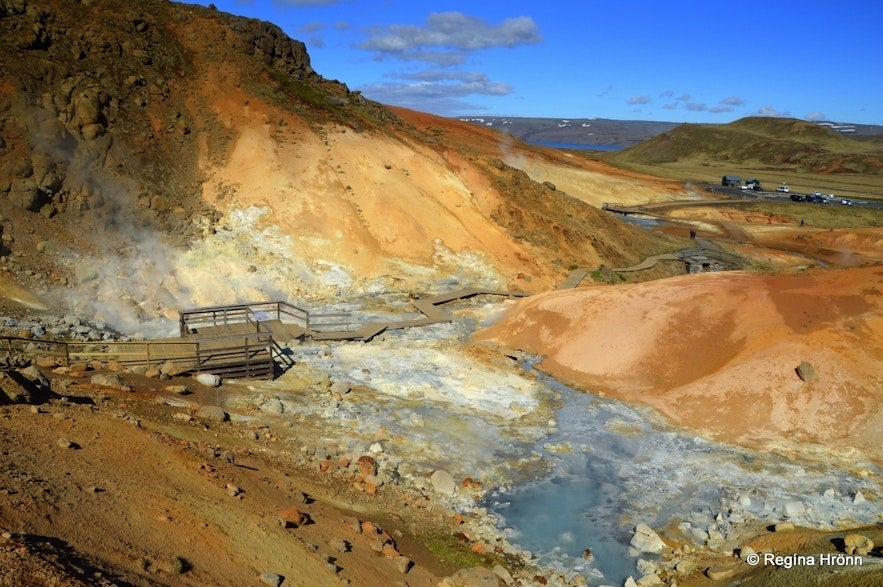 Litli-Hrutur translates to "Little Ram" in Icelandic, not to be confused with Stori-Hrutur ("Big Ram"), which can be found nearby. The volcano erupted on the Reykjanes peninsula in the southwest of Iceland—a region known for its raw natural beauty and volcanic landscape.
Litli-Hrutur translates to "Little Ram" in Icelandic, not to be confused with Stori-Hrutur ("Big Ram"), which can be found nearby. The volcano erupted on the Reykjanes peninsula in the southwest of Iceland—a region known for its raw natural beauty and volcanic landscape.
The Reykjanes peninsula is located on the Mid-Atlantic Ridge, the area where the North American and Eurasian tectonic plates meet. The region is very volcanically active and full of geothermal heat, as can be seen at sites such as the Krysuvik Geothermal Area.
The Reykjanes region is relatively young, geologically speaking, having been formed by magma rising from the core of the Earth over the past seven million years. The Westfjords in the northwest of Iceland are, in comparison, 16 million years old.
The most popular thing to do in Reykjanes is to visit the Blue Lagoon, a geothermal spa that remains Iceland's most visited attraction.
If you wish to explore the region, you can learn about its wonders on a number of great Reykjanes tours available.
- See also: 22 Things to Do in Reykjanes Peninsula
Other Volcanoes in Iceland
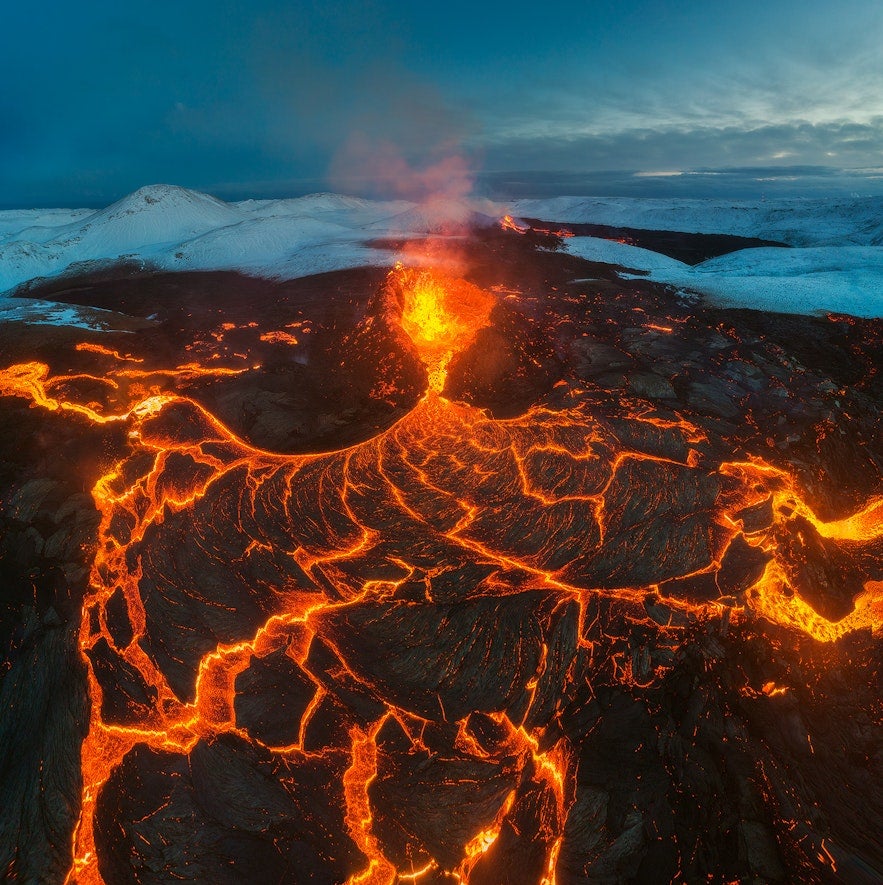 There are roughly 130 active and inactive volcanoes in Iceland. The main active volcanoes in Iceland run along the Mid-Atlantic Ridge in a curved line from northeast to southwest.
There are roughly 130 active and inactive volcanoes in Iceland. The main active volcanoes in Iceland run along the Mid-Atlantic Ridge in a curved line from northeast to southwest.
One of the most infamous Icelandic volcanoes is Eyjafjallajokull. Known worldwide for disrupting air travel across Europe when it erupted in 2010, Eyjafjallajokull made a name for itself not only as a disruptor of travel but as being notoriously hard to pronounce.
Katla is one of Iceland's largest and most active volcanoes, hidden beneath the Myrdalsjokull ice cap. The volcano has had over 20 documented big eruptions in the last millennium, and the next eruption will most likely be a large one.
Another iconic volcano, Hekla, has erupted over 20 times since the country's settlement in 874 AD, earning the moniker "Gateway to Hell" during the Middle Ages. Geologists keep a close watch on Hekla due to its history of unpredictable eruptions.
Fagradalsfjall was Iceland's newest volcano before Litli-Hrutur stole the spotlight. Hundreds of thousands of people visited the volcano, which was very tourist-friendly and brought attention to the spectacular forces of nature present in Iceland.
Will Litli-Hrutur Erupt Again?
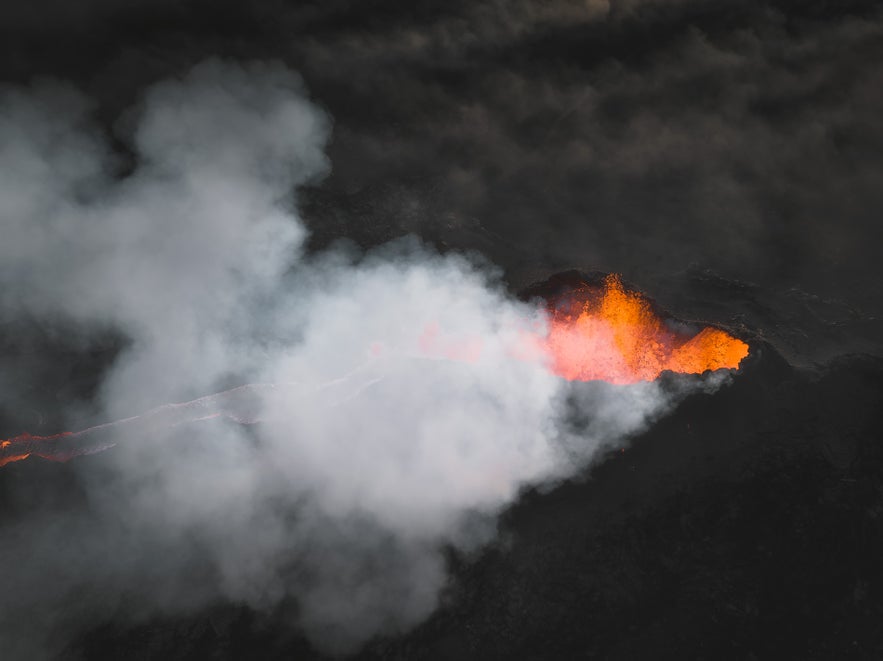
As of right now, there is no definite answer to the question of whether or not Litli-Hrutur will erupt again. With multiple eruptions since 2021, it is safe to say that there is a lot of volcanic activity in the Reykjanes area. If and when another eruption begins in the area, it is impossible to say if it will be by Litli-Hrutur or somewhere else.
This article will be updated as the volcanic activity of the Reykjanes peninsula continues to unfold. Do you have any more questions about the eruption at Litli-Hrutur? Let us know in the comments below, and we'll do our best to answer them!



